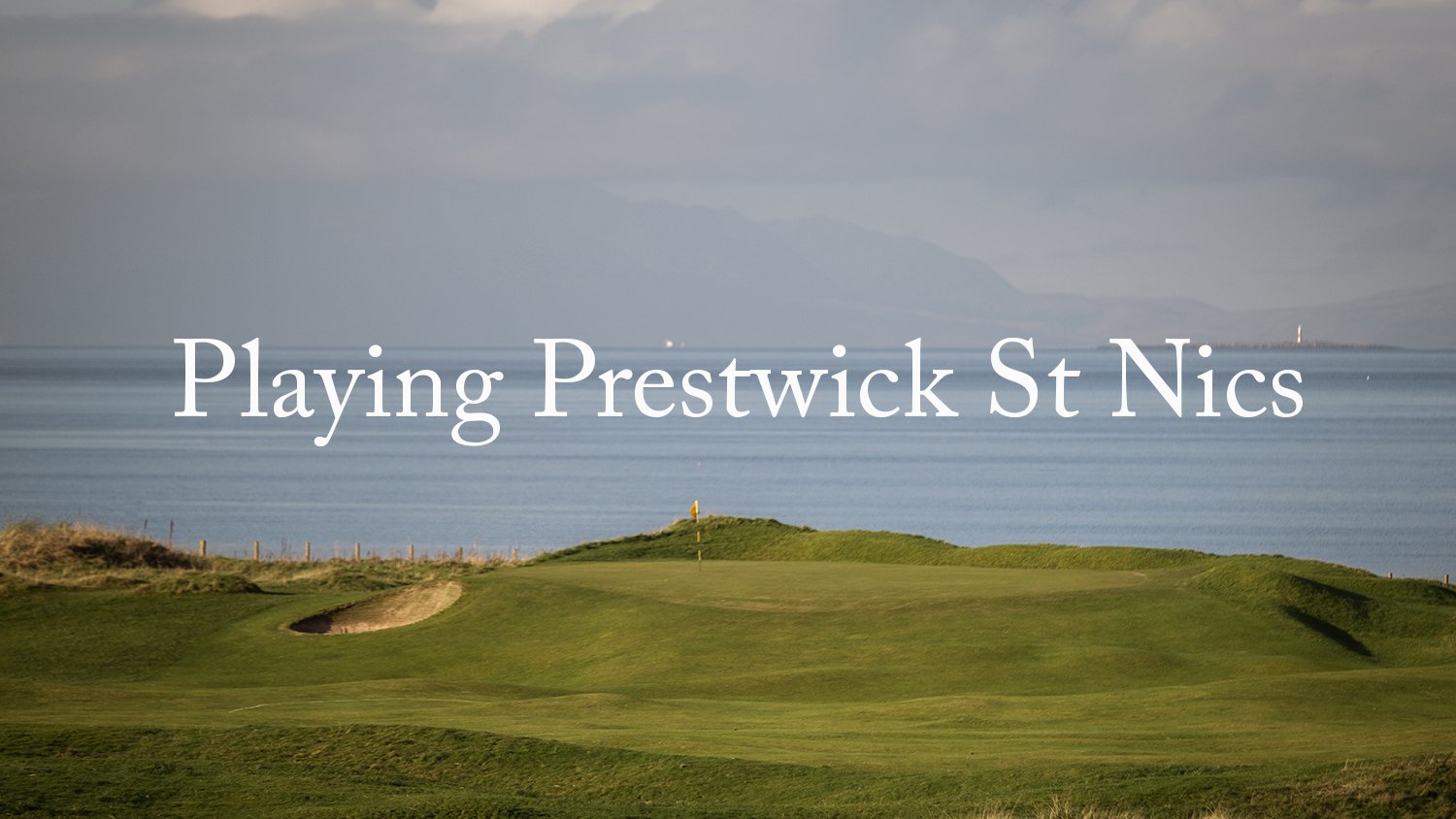Playing Prestwick St Nicholas
I’m proud to be a member of the 26th oldest golf club in the world. I really have my wife Amanda to thank for this, more so than my proposer and seconder, because it was she who casually announced back in 2000, as we sat in the Ailsa Lounge at Turnberry awaiting an industry function, that we should move from Edinburgh to ‘The West Coast’. It would cut down the commute to Glasgow where I was based and, she explained enthusiastically, improve our quality of life. A year later, and with the odd logistical challenge, we pitched up in Prestwick and have never looked back.
Prestwick St Nicholas Golf Club is almost on my doorstep. When the opportunity arrived to join, I jumped at it. Who wouldn’t – how many Clubs have Old Tom as a founding member and two Open Champions in their past? I was invited to play a few rounds over the course with my sponsors, as tradition dictated, to get a feel for the links, and for them and their fellow members to learn more about me. Eighteen years later, the quality of the course can still help me shoot in the 70s or escalate me into the 80s, depending on the wind and the weather: it's a course of two halves, of varying directions and of high dunes and low fairways. In a tightly-bound area of linksland at the western edge of the town, the course has matured from its 1892 inauguration to become a regular host of Amateur Opens and championships. Guests and members alike often pause to gaze out to the sea, visible from every hole on the course, looking for passing wildlife or the exact point where their ball disappeared with a splash. The Isle of Arran sits on the horizon, its many peaks providing a good reference point for a ball flight that wasn’t quite right.
The course is split by Maryborough Road, at the end of which on the seashore sit the iconic Salt Pan houses, a pair of 18th century buildings constructed by a local landowner and one of the wealthiest men in the world at the time. Oswald of Auchincruive was Britain’s representative for the signing of the Treaty of Paris, and reportedly coined the phrase “United States” in his many communications to save repeatedly writing out the individual names of the colonies seeking separation. The Houses’ position off the 3rd green, Arran behind, can often distract you from the challenge this par-4 presents. Thick gorse down the right, road down the left and not a flat lie until you get within 60 yards of the green which sits on a banked plateau with OOB close behind. You do not want to slice, or hook, or play long.
The ground to the clubhouse side of Maryborough Road is the highest natural point in Prestwick, with tumbling old dune systems and deep hollows that are now the fairways of the six opening and closing holes. Bunkers, sometimes hidden, are located on the greenside flanks, and the putting surfaces have subtle borrows and steps to overcome. Over the road, two par-4s take you away from the crossing point and back, rising and returning through ancient dune ridges to glimpse the gentler ground beyond. The 6th hole, a blind shot off the tee over a large, heather-clad dune runs tight to a coastal path and OOB wall. Beyond, the spectacular views to Ailsa Craig, Ayr Bay and the southern end of the course are breath-taking. Judging the right club into the raised green, again with OOB behind, is essential.
The sound of bells is constant around the course, the different tones of each helping golfers know when the particular fairway ahead is clear. The 7th and 8th holes encircle the Bellrock Quarry, the former’s dune ridge blocking most second shots to the SI 1 green, followed by a dogleg par-4 where an approach shot must fly over the water-filled former quarry to reach a two-tier green surrounded by high banking on all sides. The 9th tee sits high off the coastal path, the sea behind you and, ahead, a chance to open the shoulders and run the ball up the climbing fairway with wind assistance, carefully avoiding the five fairway-edge bunkers, one lateral and right across the ridge. In summer, the heady scent of the pink dogroses barely compensates for finding sand.
From the plateau mound of the par-3 10th tee, used as a firing range butt by the Army in WW1, the panorama of the clubhouse, Arran and down to the flatter, southern section of the course lies before you. This is not to say that it’s like a billiard table from 11 through 14: far from it. Relatively speaking, the par-5 11th and the par-4 13th have areas of fairway which are predominantly level, but the influence of the deep rough, dunes, old ridges, hollows and slopes make it anything but straightforward for the average golfer. It’s why Prestwick St Nicholas is a perfect course for players of all abilities. Low handicappers enjoy the course’s reputation as having the best greens in the west and rewarding strategy off the tee, whilst higher handicappers enjoy the views, the forgiving fairways and the fun which the rolling humps and hollows on its fairways can provide. The fact that there is OOB on twelve holes, and blind shots sprinkled throughout the course on both tees and approaches adds to the excitement, and the opportunity to play the risk-and-reward shots is always available.
Heading back to the clubhouse, there’s some wispy rough you can use as a bailout before the railway line becomes your OOB down the right of the 14th. A good drive up to the ridge, avoiding the four perfectly-positioned fairway bunkers, leaves a mid-iron or hybrid back down the slope to a relatively flat green. Onto the dogleg 15th, again to a raised green protected by four bunkers and requiring either a lay-up hybrid, or a perfectly-flighted draw with a driver to reach its slopes. A key shot around the course is the ability to knock a wedge, or similar, into the greenside slopes, letting the ball take one or two bounces to then gently roll onto the green. It’s a handy shot to have in the bag on a windy day.
The view down the 16th’s rising and falling fairway to the bright white clubhouse, viewed through a cutting in an old dune, is spectacular. OOB features again to the right, with a stand of tall pines in the far corner at the perfect 460cc distance, and continues as St Ninian’s Road along the side of the 17th. The rolling, crumpled parallel fairways of this and the formidable 18th lie ahead. A birdie is eminently feasible at this penultimate hole, and back-to-back threes are the story of the few. These finishing holes can punish and pardon equally, such is the nature of links golf and a lack of focus.
The 18th stands as one of the great finishing holes, even as a par-3. At 227-yards off the tips, it really doesn’t need the Captain’s Charity Bunker at its front left for protection. In no particular order: the prevailing wind, the golfers on the 17th fairway, the car park to the right, the walkway past the Pro Shop, the golfers who ignored the sign on the 1st tee to give courtesy to players on the 18th tee and finally, the driver who sees you teeing off as they leave the Club car park and decides to wait out of courtesy, their noisy engine chugging away just as you swing. The furthest flat roof of the clubhouse, and the nearby Sailing Club, have had more than their fair share of dimpled bullets over the years, and yet, as members, it doesn’t faze us as much as it does our guests. It’s our 18th, and just like our Club, we’re proud of its pedigree.
By Murray Bothwell
Photos by Cub Golf




